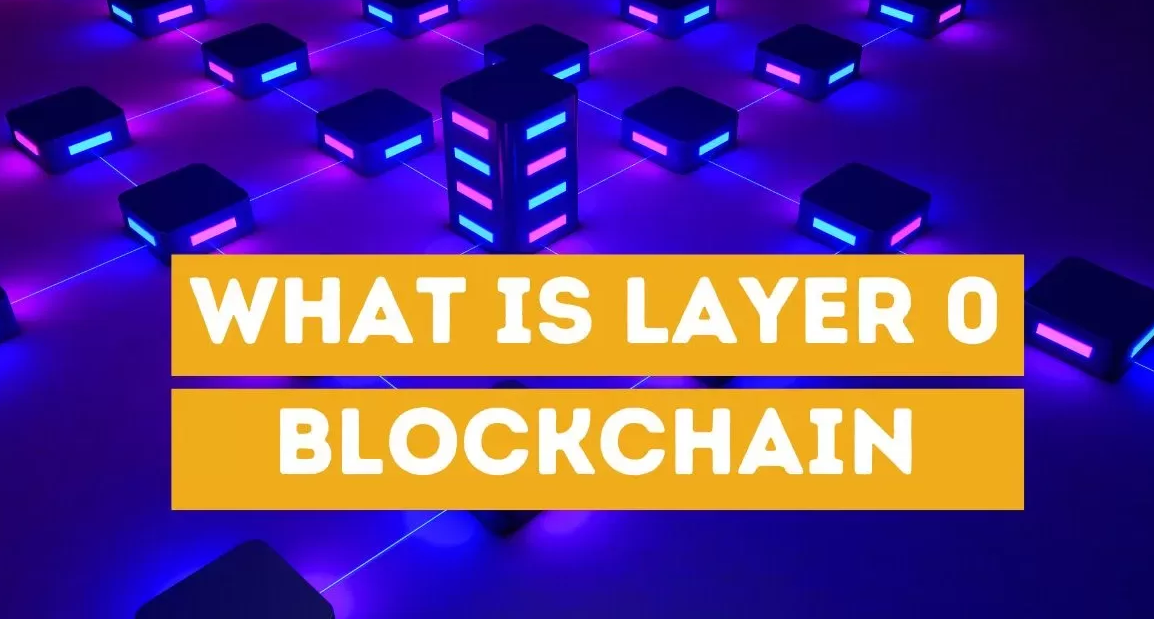Quick Links
Summary of Blog in Three Points
- Layer 0 blockchains present the solution to 3 critical problems- Scalability, flexibility, and interoperability.
- As opposed to monolithic architecture; execution, consensus, and data availability layers work independently but are in sync.
- High scalability as Layer 0 (L0) networks are equipped with software development tool kits or SDK.
What is Layer 0?
Layer 1 networks like Ethereum and Binance Smart Chain have adopted a monolithic architecture which means that execution, consensus, and data availability layers, responsible for data validation and settlement, are all functioning within a single blockchain network.
This stacked framework strains the system and thus triggers the situation of the Blockchain Trilemma, causing congestion and making it difficult to scale. You would have experienced high gas costs on Ethereum when the chain is too busy.
Layer 0 framework seeks to solve this issue by delegating 3 functions to different independent blockchains. These functions are triggered in sync while the state of the chain is maintained.
When it comes to scalability, layer 0 networks can help blockchain scale. It causes less congestion while function delegation helps to improve the efficiency and throughput of the chain.
Layer 0 protocols serve as the main and primary blockchain backing up transaction data from various Layer 1 chains. While there are clusters of Layer 1 chains built on Layer 0 protocols, there are also cross-chain transfer protocols that enable tokens and data to be transferred across different blockchains.

How does Layer 0 Work?
The 3 essential components of a Layer 0 protocol are
- The Main Chain: Which typically serves as the primary blockchain (main chain) where transaction data from the Layer 1 chains is generally backed up.
- Sidechains: These are connected to the main chains. These are independent Layer 1 chains that have their own set of validator nodes and are free to run their own consensus mechanism. These chains often share the security of the mainchain, it being the largest and most decentralized.
- Cross-chain transfer protocol: It enables tokens and other forms of data to be transferred in a trustless and secure manner between chains.
Eg- Cosmos uses a mechanism called the Inter-Blockchain Communication protocol (IBC), where ‘Zones’ (Layer 1 blockchains) can communicate with each other using HUB, its main chain.

Why do we need Layer 0s?
- Flexibility– dApps built on top of L1 networks are susceptible to the challenges faced by L1. For example- dApps on Ethereum are prone to rising gas fees, while downtime of the Solana network makes all dApps go offline.
- Design– While designing the dApps, developers need to ensure that they are compatible with L1 networks, and lack the ability to experiment freely with token incentive models because consensus rests upon the L1 infrastructure layer.
The over-dependence on Layer 1 networks can be traded off by creating a new base infrastructure that allows developers to create their own independent blockchains and provide them with the freedom to align their token models. Layer 0 presents itself as a solution to these problems.
Top Layer 0 Protocol and Use Cases
- Cosmos- Cosmos is an ecosystem of interconnected apps and services positioning itself as the internet of blockchains. Developers can launch their own blockchains using the Cosmos SDK. Cosmos Zone (its sidechain) utilizes an Inter-Blockchain Communication protocol (IBC) to connect with Hub (main chain).
- Polkadot- Polkadot is a multichain infrastructure that unites and secures specialized blockchains called parachains. They are connected together by the Polkadot Relay Chain while the bridges allow them to connect with external networks.
Use Cases of Layer 0
Security: Layer 0 compliments the security of the network as the user may be required to stake the Layer 0 token in order to become a validator on Layer 1, which means they can lose both stakes (Layer 0 &1) if they try to submit fraudulent transactions.
Decentralization: Layer 0 enables the decentralized nature of a blockchain network. This is achieved through the flexibility to implement your consensus mechanism and the distribution of nodes throughout the network.
Scalability: Layer 0 improves the blockchain scalability, as the core functions can be handled by separate chains allowing the chain to be optimized for throughput.
Interoperability: Layer 0 enables the interoperability of different blockchain networks and allows for the exchange of information with each other with minimal friction.
Conclusion
Ethereum and other Layer 1 chains are experiencing major issues such as the rise in gas fees due to congestion. The structural limitations wherein the main chain manages all the core operations of data availability, consensus, and execution have significantly impacted the transaction throughput.
Thus, Layer 0 blockchains have adopted the layering stack that allows for Flexibility; Chains can have their own set of validator nodes to confirm transactions and produce blocks based on their own consensus mechanism & Interoperability- Easy communication with the Lo and other L1 chains in the ecosystem.
They have provided them the ease to developers to create their own chains and design their token issuance model – inflationary or deflationary making it independent from the state of the base chain and bracing the true essence of decentralization.









